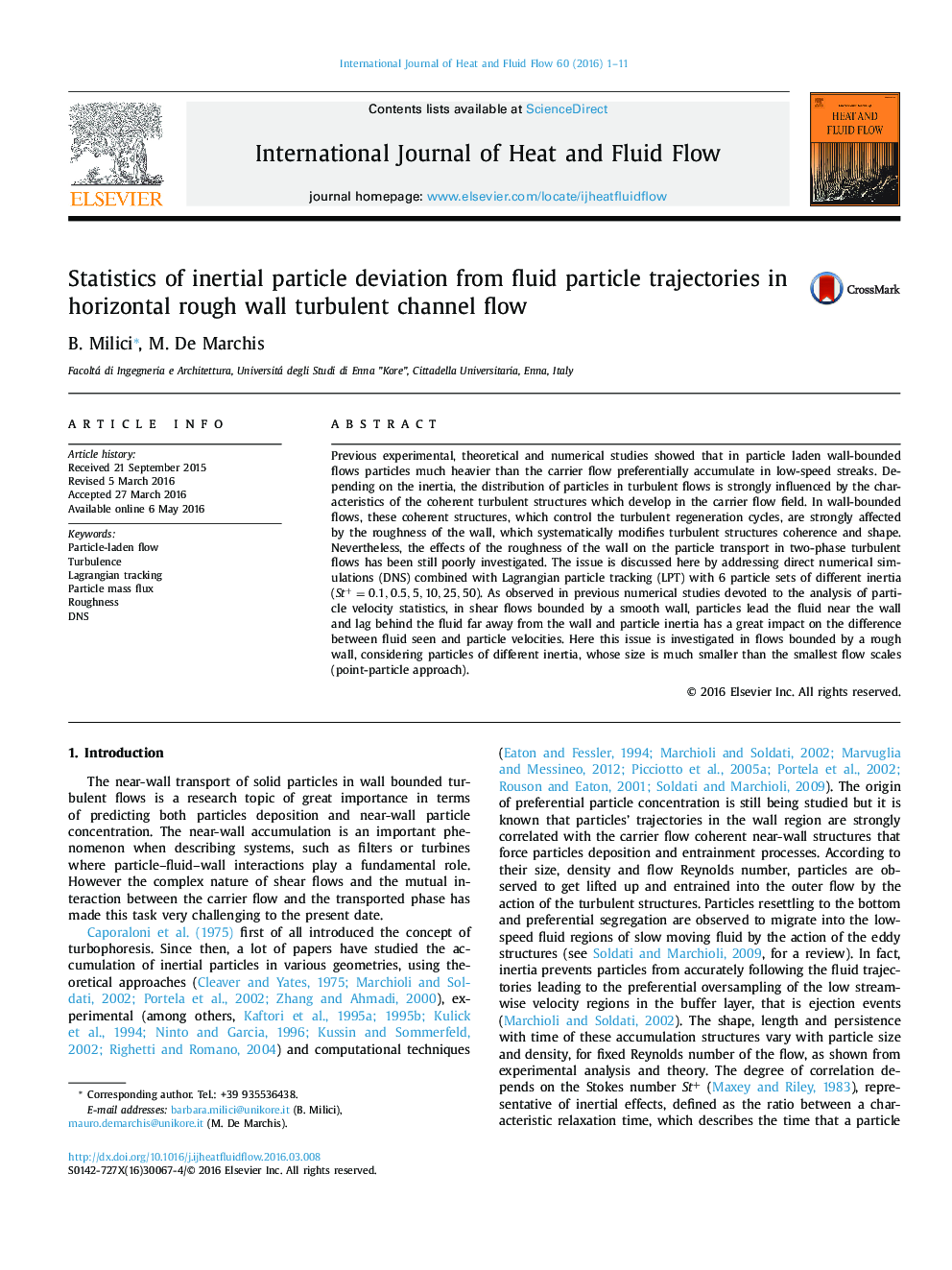| Article ID | Journal | Published Year | Pages | File Type |
|---|---|---|---|---|
| 654972 | International Journal of Heat and Fluid Flow | 2016 | 11 Pages |
•DNS and LPT to investigate on particles accumulation over irregular rough surfaces.•The roughness affects the near wall turbulent flow field.•The roughness destroys the typical particle accumulation over flat surfaces.•Wall roughness induces a reduction of particle accumulation in near-wall regions.•In rough channels turbophoresis does not occur for large inertia particles.
Previous experimental, theoretical and numerical studies showed that in particle laden wall-bounded flows particles much heavier than the carrier flow preferentially accumulate in low-speed streaks. Depending on the inertia, the distribution of particles in turbulent flows is strongly influenced by the characteristics of the coherent turbulent structures which develop in the carrier flow field. In wall-bounded flows, these coherent structures, which control the turbulent regeneration cycles, are strongly affected by the roughness of the wall, which systematically modifies turbulent structures coherence and shape. Nevertheless, the effects of the roughness of the wall on the particle transport in two-phase turbulent flows has been still poorly investigated. The issue is discussed here by addressing direct numerical simulations (DNS) combined with Lagrangian particle tracking (LPT) with 6 particle sets of different inertia (St+=0.1,0.5,5,10,25,50St+=0.1,0.5,5,10,25,50). As observed in previous numerical studies devoted to the analysis of particle velocity statistics, in shear flows bounded by a smooth wall, particles lead the fluid near the wall and lag behind the fluid far away from the wall and particle inertia has a great impact on the difference between fluid seen and particle velocities. Here this issue is investigated in flows bounded by a rough wall, considering particles of different inertia, whose size is much smaller than the smallest flow scales (point-particle approach).
Graphical abstractFigure optionsDownload full-size imageDownload as PowerPoint slide
